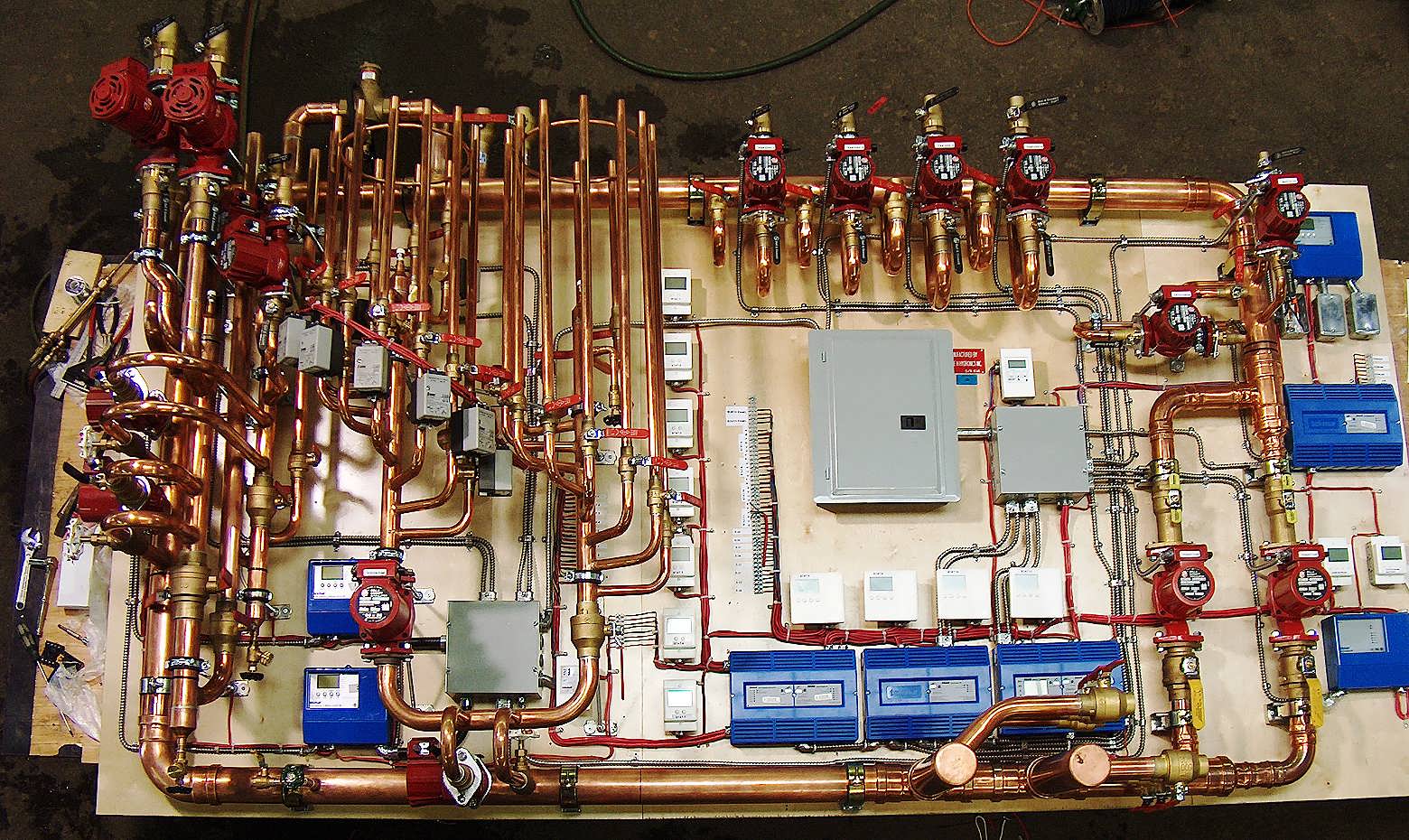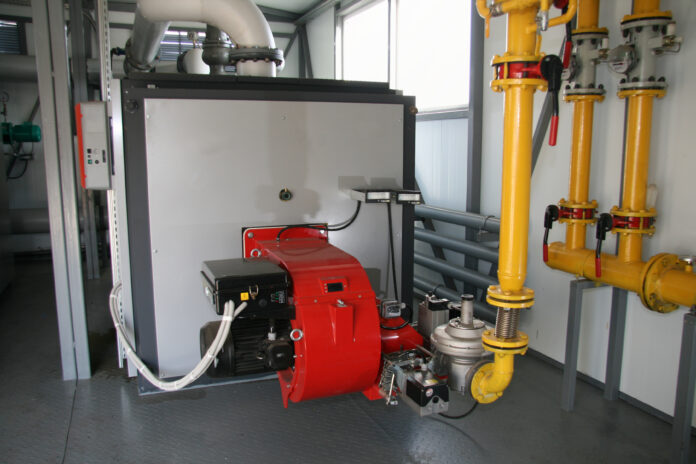Radiant heat technology has been gaining popularity in recent years for its ability to provide efficient and comfortable heating solutions. This innovative technology utilizes heat transfer directly from a hot surface to objects in the room rather than heating the air like traditional heating systems. In this blog post, we will explore the role of radiant-heat in everyday life, discussing its benefits, applications, and future potential.
Understanding Radiant-Heat Technology
Radiant-heat operates on a simple yet profoundly effective principle: it heats surfaces, not the air. This technology relies on infrared radiation to transmit warmth directly from a heated element to the objects and individuals in a room. Imagine the warmth of the sun on a chilly day; radiant-heat mimics this natural process indoors, providing a feeling of comfort and warmth that is both direct and gentle.
Electric, hydronic, and infrared are the primary forms through which radiant-heat technology is applied. Electric systems use electrical resistance to generate heat, which is transferred to floors, walls, or ceilings. Hydronic systems, conversely, circulate heated water through a network of pipes to distribute warmth. Infrared panels, a more direct form of radiant-heating, emit infrared light that warms objects and people directly without significantly heating the air around them.
Each method has its unique mechanism and installation considerations but shares the common benefit of heating spaces more efficiently and uniformly than traditional convective systems. By focusing on heating the objects within a space rather than the air itself, radiant-heat provides a level of thermal comfort that is both unique and energy-efficient. This fundamental understanding of radiant-heat operates opens the door to appreciating its diverse applications and benefits in creating comfortable living and working environments.
The Health Benefits of Radiant-heat
Radiant-heat technology stands out not only for its efficiency but also for its contribution to creating a healthier indoor environment. Unlike conventional heating methods, which can stir up and distribute dust, pet dander, and other potential irritants by blowing warm air throughout a space, radiant-heat systems work quietly and cleanly. By minimizing air movement within a room, these systems significantly reduce the circulation of airborne particles, thereby lowering the risk of aggravating asthma and allergy symptoms.
This aspect of radiant-heating is particularly beneficial during colder months when individuals spend more time indoors and windows are kept closed, limiting natural ventilation. The consistent warmth provided by radiant-heat technology can help maintain an optimal indoor humidity level. Excessive dryness, often a byproduct of traditional heating systems, can lead to dry skin, irritated respiratory passages, and an increased susceptibility to colds and infections.
Radiant-heat systems contribute to overall comfort and well-being by preserving a more balanced indoor humidity. The gentle, even heat distribution characteristic of radiant-heat systems supports better blood circulation. Unlike the sometimes uneven heat produced by conventional systems, which can create hot and cold spots in a room, the uniform temperature maintained by radiant-heat promotes a more comfortable environment conducive to relaxation and health.
Energy Efficiency and Cost Savings
Radiant-heat systems are celebrated for their superior energy efficiency, which stems from their innovative method of direct heat transfer. This approach minimizes the loss of energy commonly associated with ductwork or piping in traditional heating systems, ensuring that the warmth is delivered more effectively and directly to living spaces. Such efficiency contributes to a reduction in energy consumption and translates into notable cost savings on heating bills.
Homeowners and businesses can enjoy a warmer environment without the financial strain typically linked to conventional heating methods. The initial investment in radiant-heat technology can be balanced against the long-term savings from lower operating costs. This makes radiant-heating a financially sound choice for those looking to enhance their energy savings.
The precision control offered by these systems allows users to fine-tune their heating needs, reducing wasted energy and optimizing cost efficiency. Whether by reducing the workload on the central heating system or simply providing targeted warmth where it’s needed most, radiant-heat systems embody a blend of comfort, conservation, and cost-effectiveness that traditional heating solutions struggle to match. This economic advantage and environmental benefits position radiant-heat technology as an intelligent investment for future-forward heating solutions.
Radiant-heat in Residential Applications
Radiant-heat technology, increasingly embraced in modern home design, offers several benefits. It allows homeowners to maintain a comfortable and even temperature, regardless of the room size or design. It’s also a highly efficient way to warm homes, leading to potential cost savings in the long run. It’s a visually unobtrusive solution, enabling homeowners to maintain the aesthetic integrity of their spaces while enjoying the warmth they provide.
Enhanced Home Comfort
Radiant-heat systems deliver a consistent and uniform warmth, eliminating cold spots typically found with conventional heating methods. This results in a more comfortable living environment throughout the home
Versatile Installation Options
From underfloor heating to radiant wall panels, these systems can be integrated into various home parts, including bathrooms, kitchens, and living areas, offering flexible solutions for any space.
Energy-Efficient Heating
By directly warming people and objects without needing to heat the entire air volume in a room, radiant-heat systems can reduce energy usage, leading to lower utility bills.
Improved Aesthetics
Without radiators or visible heating elements, radiant-heat systems maintain the aesthetic appeal of a home’s interior design, offering an invisible yet effective heating solution.
Compatibility with Various Floorings
Radiant-heat is suitable under tile, hardwood, laminate, and even carpeted floors, providing versatility and ensuring that heating system requirements do not limit interior design choices.
Commercial and Industrial Uses of Radiant Heat
Radiant heat technology has found its niche in homes and across various commercial and industrial landscapes. Its versatility shines in settings such as warehouses and manufacturing plants, where maintaining consistent temperatures can be challenging. By strategically using infrared radiant panels, businesses can focus warmth directly onto workstations or specific zones, enhancing worker comfort without the need to heat unused spaces. This targeted approach is practical and cost-effective, as it reduces energy consumption by heating only areas that require it.
In retail environments, the ambience created by radiant-heat contributes to a more inviting atmosphere for customers, encouraging more extended visits and potentially increasing sales. The technology’s silent operation ensures that the shopping experience remains undisturbed, starkly contrasting the noise associated with forced-air systems. Restaurants, too, benefit from radiant-heat systems, as they can maintain optimal comfort levels for patrons, fostering a pleasant dining environment.
Agricultural applications of radiant-heat are revolutionizing the way farms operate. From maintaining the warmth in barns and greenhouses to aiding in drying crops and produce, the efficiency and control offered by radiant-heat systems support sustainable agricultural practices. This broad spectrum of applications underscores the adaptability and effectiveness of radiant-heat technology in meeting the diverse needs of commercial and industrial sectors, paving the way for innovative uses in various fields.
The Installation Process Explained
Installing radiant-heat systems can be a straightforward or complex, highly dependent on the technology chosen and the heated area’s specifics. For electric radiant-heat setups, the process is relatively streamlined. These systems can easily be incorporated into both new constructions and existing homes, making them a popular choice for renovations or upgrades. The simplicity of electric systems often allows for a less invasive installation process, which is particularly appealing for projects where minimizing disruption is a priority.
On the other hand, hydronic radiant-heat installations are more intricate. This method involves laying a network of pipes beneath floors or within walls to circulate heated water. Given the complexity of this system, a comprehensive approach from the outset, including detailed planning and professional execution, is necessary. These systems must be installed with precision to ensure efficient operation and avoid future issues arising from improper installation.
Regardless of the system type, enlisting the expertise of professionals is crucial. Qualified installers can assess the specific needs of a space, recommend the most suitable radiant-heat kind of system, and ensure that the installation is carried out efficiently and correctly. Professional oversight guarantees that the system’s benefits—energy efficiency, comfort, and cost savings—are fully realized.
The Future of Radiant-Heat Technology
The horizon of radiant-heat technology is expanding rapidly, driven by innovations in materials science and digital controls. Future systems are anticipated to be even more energy-efficient, leveraging advancements in nanotechnology and improved conductive materials that enhance heat distribution and retention. The integration of innovative technology is set to redefine the user experience. Homeowners will soon be able to adjust and optimize their radiant-heating systems with unprecedented precision using smartphone apps and voice-activated devices. This connectivity will improve convenience and enable real-time energy monitoring, helping users to reduce their carbon footprint further.
Another exciting development is the potential for radiant-heat systems to incorporate renewable energy sources more seamlessly, such as solar or geothermal power, making them a cornerstone in the movement towards sustainable living. Research is also being conducted into new forms of radiant-heating that could be applied in non-traditional settings, opening up possibilities for use in outdoor spaces or the automotive industry to enhance passenger comfort. As these technologies mature, the adoption of radiant-heat systems is expected to surge, not just in residential and commercial settings but across a broader range of applications, reinforcing its role in the future landscape of heating solutions.
Conclusion
Radiant heat technology is a paradigm shift in how we think about heating our spaces, merging the benefits of comfort, efficiency, and health into a cohesive system that fits seamlessly into our lives. Its ability to provide targeted warmth directly to people and objects without wasting energy on heating unused spaces represents a leap forward in environmental stewardship and personal well-being. As we look to the future, the potential for radiant-heat to integrate with renewable energy sources and intelligent technology will further elevate its role in sustainable living and energy management. Embracing radiant-heat technology means investing in the comfort and health of our immediate environments and contributing to a more significant movement towards reducing our collective carbon footprint.
FAQs
Q: How much does it typically cost to install radiant-heat systems, and are they more expensive than traditional systems?
A: The installation cost for radiant-heat systems varies widely based on the chosen technology (electric vs. hydronic) and the project’s scope. Though the initial expense may be higher compared to conventional heating solutions, the long-term energy savings and operational efficiency can make radiant-heat a cost-effective choice over time.
Q: Is it possible to integrate radiant heat systems with existing heating systems in a home?
A: Radiant heat systems can be effectively combined with other heating solutions to create a comprehensive and efficient heating strategy. They can serve as the primary heat source or supplement existing systems, offering enhanced comfort and efficiency.
Q: What maintenance requirements are associated with radiant-heat systems?
A: Radiant-heat systems are designed to be low-maintenance, requiring minimal upkeep. Periodic checks and routine cleaning are generally all needed to maintain optimal functionality. However, it’s advisable to schedule regular professional inspections to ensure the system operates efficiently and to preempt any potential issues.
Q: Can radiant-heat systems improve the indoor air quality of my home?
A: Since radiant-heat systems do not rely on circulating air to provide warmth, they can improve indoor air quality by reducing the movement of dust, allergens, and other airborne particles. This feature makes them ideal for individuals with allergies or respiratory sensitivities.
| Other Good Articles to Read |
| skank blogs |
| unreal blogs |
| tba blogs |
| all city forums |
| dany blogs |
| refuge blogs |
| the music blogs |
| key forums |
| the big blog theory |
| joe blogs |
| blogs 4 me |
| Blogs Emon |
| Related Business Listings |
| Contact Directory |
| Local Business Profiles |
